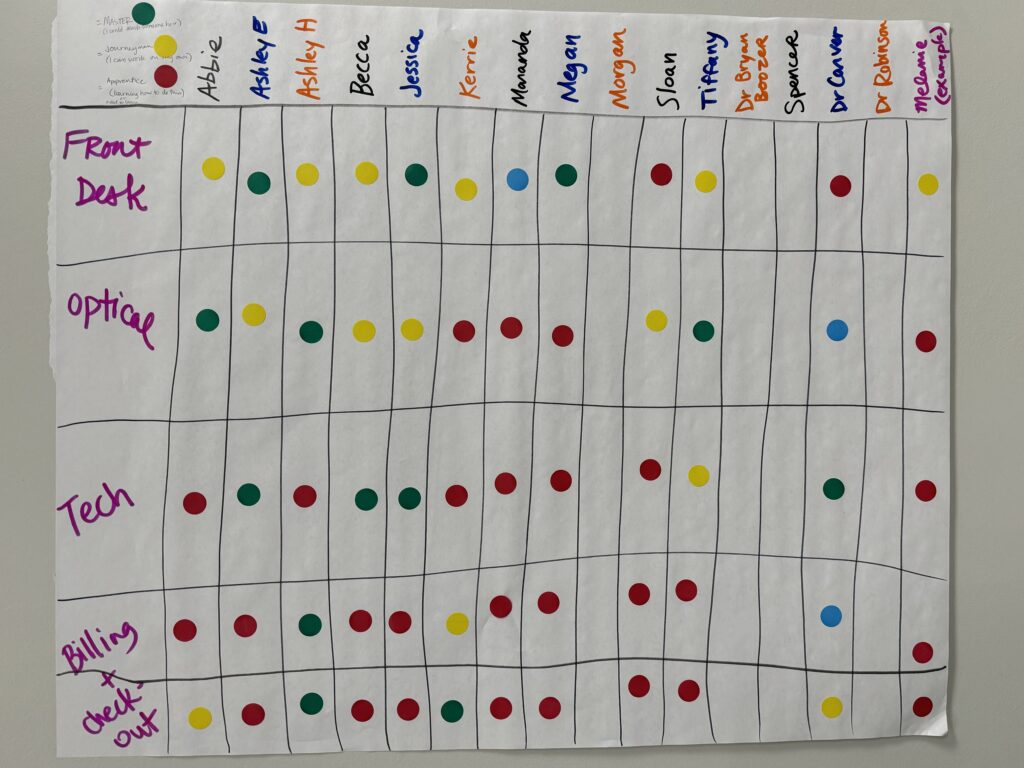Uncover Hidden Talents with a Competency Matrix
Boost Your Team’s Performance with Cross-Training
Are you looking to enhance your team’s performance and uncover hidden talents? One of the most effective ways to do this is through cross-training. Not only does it help in building a versatile team, but it also fosters a deeper understanding of each member’s skills and experience levels. A Competency Matrix tool can help to identify training opportunities, address skill gaps, and ultimately create a more cohesive and resilient team.
I’ve been working with a team to better define their culture and reduce their high turnover rate. Through interviews, we pinpointed common issues and set priorities for improvement. Training emerged as a key focus, so I introduced the Competency Matrix to map each team member’s skills and identify areas for cross-training.
There are a couple of ways to use the competency matrix. One is from an external observer (manager) point of view, listing the competencies and rating employees on each skill. However, I think the best way to use this tool is to let the employees build the matrix together, allowing time for self-assessment and discussion.
How to use the Competency Matrix tool with your team:
- List the skills or functions needed for your team – or for a specific project. Group the skills by categories, such as:
- Topics and Subject Matter
- Tools and Technologies
- Processes and Practices
- Soft Skills
2. Decide the competency level(s) needed for each area – Novice (red), Practitioner (yellow), or Expert (green). How many of each “level” do you need to cover basic needs + backups in case of emergency.
NOTE: This step can be done before or after Step 3 (team self-evaluation)
3. Develop a matrix, listing the skills down the left side, and the names of each team member across the top of the page.
4. As a team, discuss the competencies listed. How do you and the team define the topics or skills? Describe the different levels of competency:
- Novice: What is it? (Red)
- Practitioner: I can do it. (Yellow)
- Expert: I can teach it. (Green)
5. Review and discuss the skill levels on your team. Does each area have the resources and skills required for your team to be successful? What areas have gaps? Where should you focus cross-training efforts?
Here is the result of our team’s self-assessment:

Based on this image, where does the team need to focus its cross-training efforts?
We still need to define the levels of competency needed for each area, but, at first glance, the Billing and Checkout areas have the largest number of “red” dots. The team probably needs to train some additional people on Billing and Check-out processes, so the current billing and checkout employees to be able to have a break (personal time, vacation, or just going to lunch).
In this example, we created the matrix at the department level, but within each of these areas, you could break it down further to include the skills needed and evaluate knowledge and experience accordingly.
This is a great exercise to get the cross-training conversation started.
You’ll be surprised at how much you and your team will learn about each other! Sharing prior experiences and getting to know one another can uncover hidden talents just waiting to be utilized.
Ready to get started? Contact M2C2 to discuss ways can help you and your team improve!
